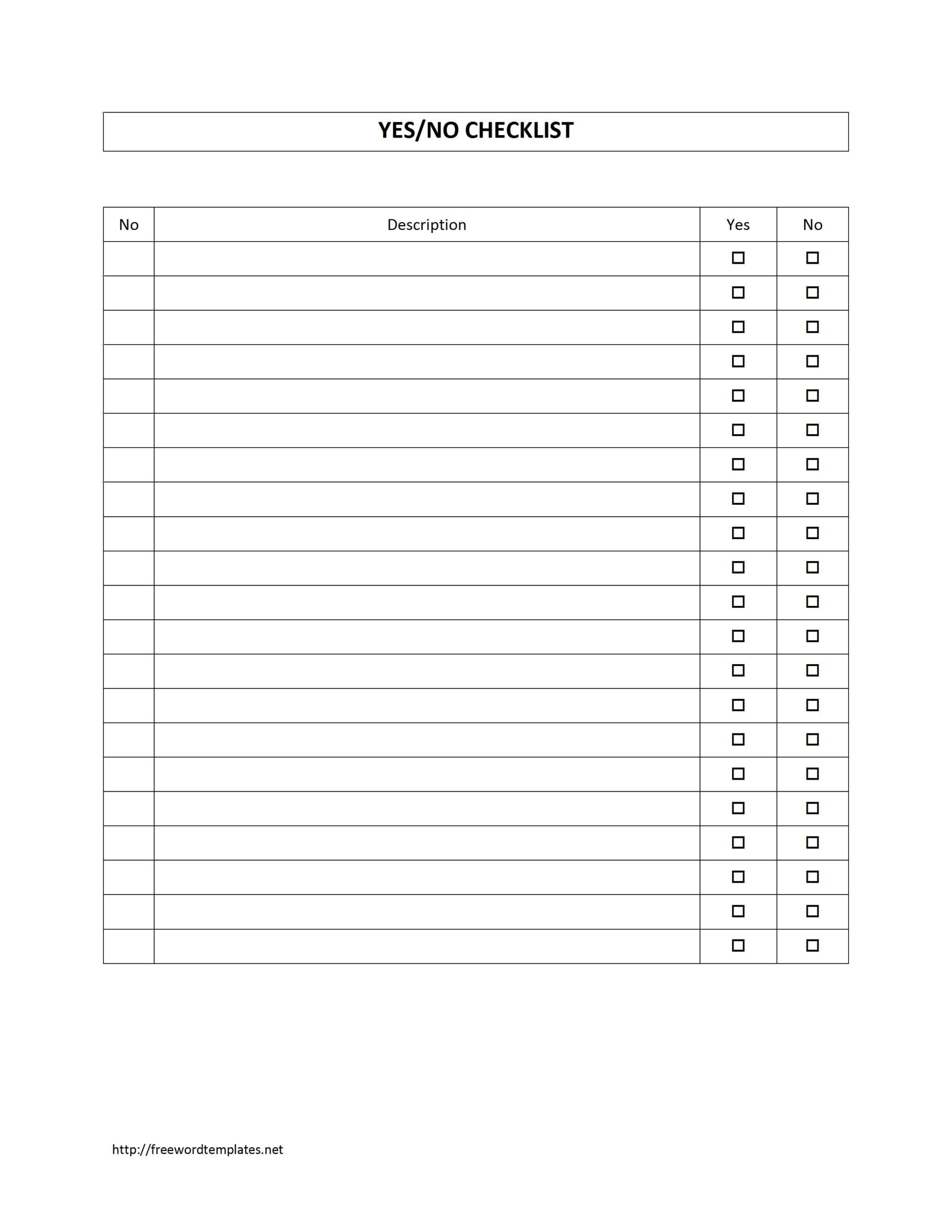Yes or no survey templates offer several benefits:

- Simplicity and ease of use: Both for the creator and the respondent.
- Quick turnaround time: Yes or no questions can be answered quickly, resulting in faster data collection.
- Clear and concise data: The binary nature of the responses makes it easy to analyze and draw conclusions.
Yes or no survey templates can be used for a wide range of purposes, including:
- Market research: Gauging customer satisfaction, product preferences, and market trends.
- Event planning: Gathering feedback on event logistics, speaker preferences, and dietary restrictions.
- Employee feedback: Collecting insights on job satisfaction, work environment, and training needs.
Key Components of a Yes or No Survey Template
Effective yes or no survey templates consist of several key components:
1. Clear and Concise Questions: The questions should be straightforward and easy to understand, avoiding ambiguity or jargon. Each question should focus on a specific topic or issue.
2. Binary Response Options: Yes or no survey templates typically offer only two response options: “yes” and “no.” This simplicity ensures quick and clear responses.
3. Logical Flow: The questions should be organized in a logical order, often starting with general questions and gradually moving to more specific ones. This helps maintain respondent engagement and ensures a smooth flow of information.
4. Demographic Questions (Optional): Yes or no survey templates may include optional demographic questions to gather additional information about the respondents, such as age, location, or industry. These questions can provide context for the survey results.
5. Clear Instructions: The survey should provide clear instructions for completing it, including how to navigate the questions and submit the responses. This helps ensure that all respondents understand the process.
Summary:A well-structured yes or no survey template consists of clear questions, binary response options, a logical flow, optional demographic questions, and clear instructions. These components work together to gather specific and actionable feedback efficiently.
How to Create a Yes or No Survey Template
Creating an effective yes or no survey template involves several steps to ensure clarity, efficiency, and actionable feedback.
1. Define Your Objectives:Clearly outline the purpose of your survey. What specific information do you aim to gather? Define your target audience and their demographics.2. Craft Clear Questions:Formulate questions that are specific, unambiguous, and directly related to your objectives. Avoid using jargon or leading language. Focus on questions that can be answered with a simple “yes” or “no.”3. Determine the Response Options:Limit the response options to “yes” and “no.” Consider including an “other” option if necessary, but avoid offering too many choices.4. Organize the Questions Logically:Arrange the questions in a logical order, typically starting with general questions and gradually moving to more specific ones. This maintains respondent engagement and ensures a smooth flow.5. Include Optional Demographics:Add optional demographic questions to gather additional information about the respondents, such as age, location, or industry. This context can provide valuable insights.6. Provide Clear Instructions:Include clear instructions for completing the survey, explaining how to navigate the questions and submit the responses. This ensures consistent understanding among respondents.
Summary:Creating a yes or no survey template requires defining objectives, crafting clear questions, determining response options, organizing questions logically, including optional demographics, and providing clear instructions. By following these steps, you can develop an effective survey template that gathers valuable and actionable feedback.
In conclusion, yes or no survey templates offer a simple and efficient way to gather specific and actionable feedback. By following best practices in design and implementation, you can create effective surveys that provide valuable insights into customer preferences, market trends, and other important metrics. The simplicity of yes or no questions makes these templates accessible to a wide range of respondents, ensuring a high response rate and reliable data.
Yes or no survey templates are a powerful tool for businesses, researchers, and organizations seeking to make informed decisions based on real-time feedback. With their versatility and ease of use, these templates will continue to play a vital role in data collection and market research for the foreseeable future.
